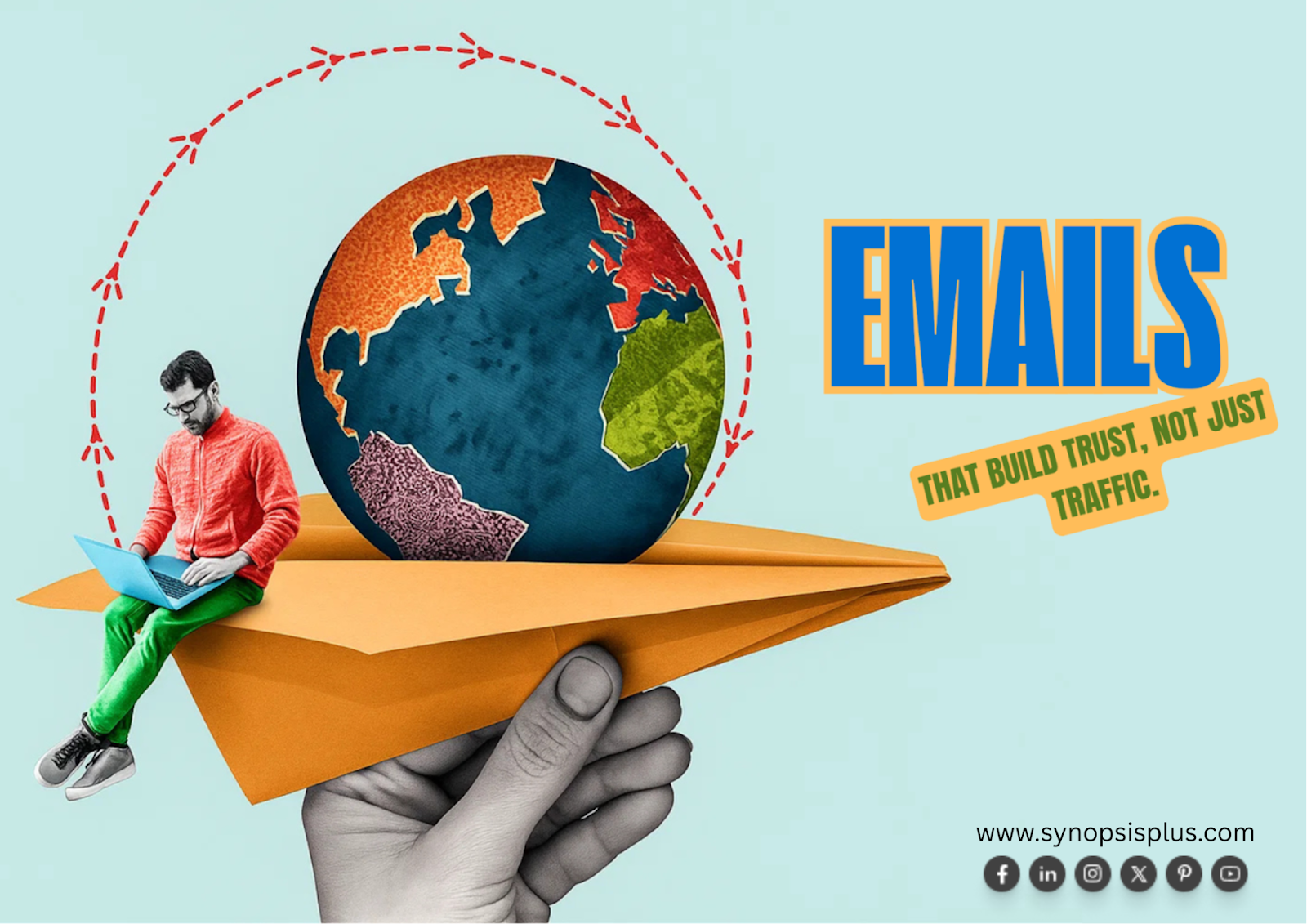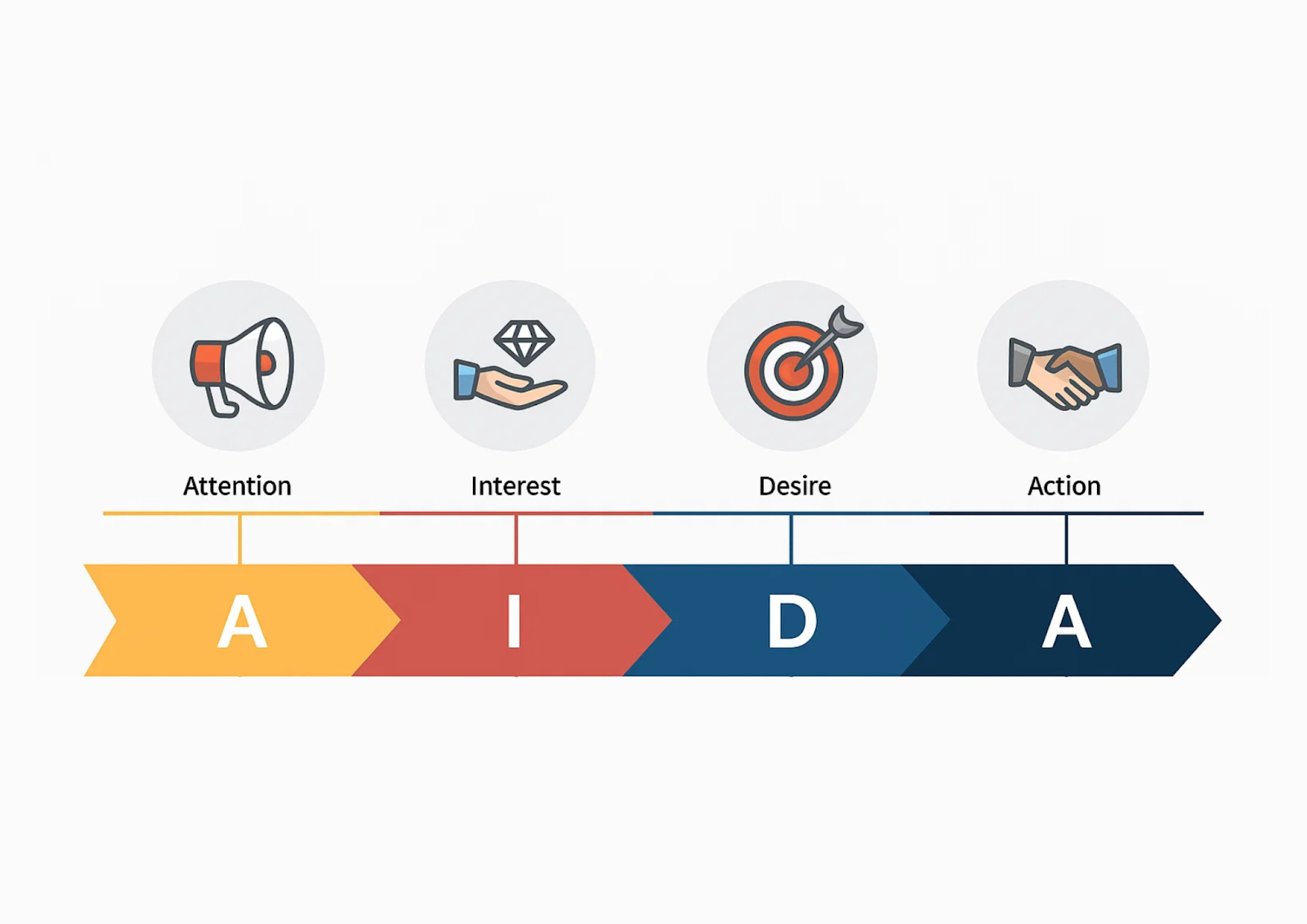
How to Write a Marketing Email That Gets Opens, Clicks, and Conversions (2025 Guide)
Email marketing is still one of the best ways to get results, with a strong return on investment. It gives a high return and keeps growing with new tools and changing customer needs. It’s also an easy way to build relationships, keep customers, and turn interest into sales. But with so many emails landing in inboxes every day, it’s not always easy to stand out. Writing an email is simple but writing one that gets clicks and sales takes skill.
What is Email Marketing?
Email marketing is a digital marketing method where businesses send emails to people who’ve signed up or shown interest. The goal is to share value, build trust, and encourage action (like buying, subscribing, or learning more).
Key Points
- Direct: Goes straight to a person’s inbox.
- Personal: Can use their name, preferences, or past actions.
- Types: Newsletters, product updates, offers, reminders, tips.
- Purpose: Build relationships, boost sales, and keep customers engaged.
Example
You buy a phone online. A week later, the company emails you:
- “How’s your new phone? Here are 5 quick tips.”
- “Get 20% off a case & charger bundle just for you.”
That’s email marketing: simple, helpful, and personal.
Types of Email Marketing
Here are some email marketing types.
- Newsletters: Regular updates with tips, news, or stories to stay connected.
- Promotional Emails: Discounts, offers, or sales to encourage purchases.
- Welcome Emails: Sent when someone signs up, to introduce your brand.
- Transactional Emails: Order confirmations, shipping updates, or receipts.
- Re-engagement Emails: Reminders to inactive subscribers to come back.
- Educational Emails: Guides, how-tos, or tips that provide value.
- Event Emails: Invitations, reminders, or follow-ups for events/webinars.
- Feedback/Survey Emails: Requests for reviews, opinions, or ratings.
Why Email Format Matters in Your Marketing Strategy
When people think about email marketing, they usually focus on the message, the offer, the timing, or the content. But the way you present it, the structure, layout, and design, can decide if someone reads your email or ignores it. The truth is, inboxes are crowded. With crowded inboxes and short attention spans, a messy email often gets deleted or ignored. That’s why good formatting is key.
Email Marketing Format For Better Opens & Clicks
Here are some easy steps to help you improve your emails. These will boost opens, clicks, and conversions whether you’re starting fresh or improving your current campaigns.
Make Your Emails Work Smarter
Email marketing isn’t just about what you write it’s about how you present it. One of the easiest ways to do this is by improving your email format. A confusing, cluttered, or text-heavy email can push readers away, no matter how great your offer is. But when your email is clean, well-structured, and easy to scan, people are more likely to stay engaged and take action.
Formatting creates flow. It guides the reader’s eyes, highlights key points, and removes distractions so your message lands clearly and quickly. If you break up long paragraphs, add clear headers, or place buttons strategically, you can dramatically improve results. Formatting is more than design. It’s a strategy. It makes your emails easier to read, more engaging, and more effective in driving clicks and conversions.
Mastering Email Marketing: AIDA Framework for High-Converting Emails in 2025
Crafting an email that truly works isn’t about luck it’s about structure. The AIDA framework (Attention, Interest, Desire, Action) is one of the most reliable ways to build emails that don’t just look nice, but actually get opened, read, and clicked. Let’s break it down step by step.

1. Attention: Subject Line & Preview That Open Doors
Your subject line is your chance to grab attention. If it doesn’t spark interest, no one will read the rest of your email.
- Keep it short most readers scan their inbox.
- Use curiosity, urgency, or benefit-driven language.
- Stay authentic don’t trick readers with false promises.
Your preview text is like the backup it gives extra context and adds another reason to open. Together, they make the first impression of your brand in a crowded inbox.
Example: Instead of writing “Weekly Updates,” try “3 Easy Ways to Boost Sales This Week.” It’s short, clear, and makes readers curious.
2. Interest: Branding & Personalization That Draw People In
Getting someone to open your email is just the first step you also need to hold their attention.
Use consistent branding your logo, colors, and tone should make your emails instantly recognizable. Keep the layout clean and mobile-friendly so readers don’t struggle to read. Simple designs build trust, but too many flashy elements can make your email feel like spam.
But design isn’t enough. Personalization matters. It’s more than just adding “Hi {First Name}.” Write in a conversational tone, like you’re talking to a friend. Adjust your message based on where they are in their journey a welcome email should feel different from a sales promo.
For example, send one message to someone who checked your pricing page, and another to someone who just signed up. When readers feel seen and understood, they’ll stay engaged.
3. Desire: Body Copy That Inspires Connection & Action
Once readers open your email, the goal is to build desire not just share information.
Think of it as: Hook ? Message ? CTA
- Hook: Start strong with a story, bold statement, or relatable pain point.
- Message: Focus on the benefit, not just the feature.
- CTA: End with one clear action you want them to take.
Stories work really well here. People forget stats, but they remember examples that feel real. The story doesn’t have to be long a quick, relatable example can be just as powerful.
Keep it short and easy to scan: short paragraphs, bullet points, and plenty of white space. Stick to the Rule of One: one message, one goal, one action. Too many ideas or links weaken the impact.
Example: Instead of saying, “Our app has advanced analytics,” try: “See your sales in real time and never miss an opportunity again.” The second speaks to the benefit readers care about.
4. Action: A Call-to-Action That Gets Clicks
The most important part of your email is the action. Without it, even the best email won’t work.
- Make your CTA clear and bold.
- Use strong action words like Start, Get, and Discover.
- Place it where it’s easy to spot and repeat if needed.
- Keep buttons mobile-friendly.
- Avoid weak CTAs like Click Here. Instead, write CTAs that speak to what the reader wants.
Example: Instead of “Learn More,” say “Start Your Free 7-Day Trial Today.” The second is clear, exciting, and hard to resist.
The Bottom Line
Email marketing in 2025 is still one of the most reliable ways to connect with your audience, but success isn’t just about sending messages—it’s about sending the right messages in the right way. By focusing on structure, personalization, and clarity, your emails can move from being overlooked to being opened, read, and acted on.
When you follow the AIDA framework, you move readers through a natural journey:
- Attention makes them curious.
- Interest makes them stay.
- Desire makes them care.
- Action makes them click.
If your emails look good, feel personal, tell a story, and end with a strong CTA, you’re not just sending messages you’re building trust and creating conversions. Remember, every email is a chance to build trust, strengthen relationships, and turn readers into loyal customers. When done well, email marketing isn’t just communication it’s a conversation that grows your business.